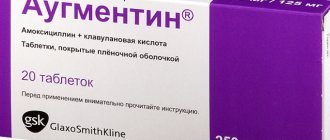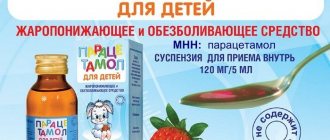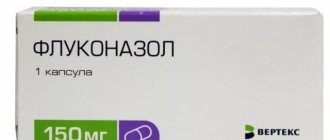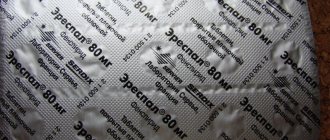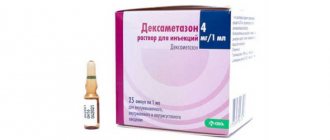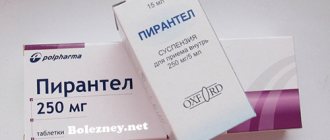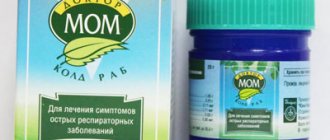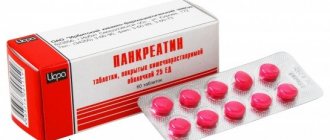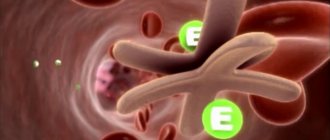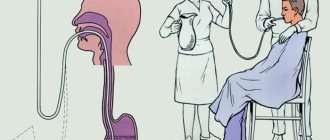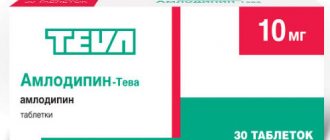Paracetamol instructions for use for children
The medicine should be used with caution, especially when it comes to children:
- persons under 6 years of age should not be given the drug for more than three days;
- From 6 years old, the medicine is given no longer than five days.
The main guideline when calculating the daily dose of paracetamol for children, according to the instructions for use, is based on the patient’s weight; per 1 kg of body weight, no more than 15 mg is supposed to be used, and at least 4 hours should pass between doses.
Attention: before giving the medicine, you must carefully study the instructions for use, and it does not matter at what age paracetamol is given to a child, whether he is 8 years old or six months old, in no case should you exceed the required course and dose for treatment.
Pharmacological action and indications for use
High temperature in children is dangerous for the development of complications of the infectious-inflammatory process and the occurrence of seizures. Paracetamol reduces pain and reduces temperature due to its effect on the functions of the corresponding nerve centers.
Indications:
- Pain of mild to moderate intensity in the throat, ears, headache, joint, muscle, dental (including teething).
- Feverish state in diseases of infectious origin.
- Increase in temperature after vaccination.
- Pain due to burn or injury.
- Fever of unknown etiology.
- Neuralgia.
Medical experts recommend using paracetamol, ibuprofen or combination drugs containing these active ingredients to get rid of feverish syndrome. The medications are antipyretics, non-narcotic analgesics. Paracetamol belongs to the anilides, ibuprofen belongs to the group of non-steroidal anti-inflammatory drugs (NSAIDs). The effect of paracetamol on the area of inflammation is much weaker than that of ibuprofen and other NSAIDs. However, acetaminophen is less irritating to the gastrointestinal mucosa.
Release form and composition
Paracetamol for children is available in several forms:
- syrup, given at any age, it has a pleasant taste;
- suppositories, used rectally for very small children;
- tablets are given from 6 years old, but if necessary, you can start giving paracetamol to a child from 5 years old.
In any case, before giving the drug, you need to consult a doctor who will accurately prescribe the course and dosage.
Compound
Children's Paracetamol can be produced in various forms. Depending on this, the drugs will contain different amounts of the active substance called “para-acetylaminophenol”.
The active substance has good absorption, which explains its rapid action. It blocks the production of the enzyme cyclooxygenase, thereby reducing pain and normalizing body temperature.
Additionally, the children's medicine contains other substances:
- Nipasept sodium.
- Maltitol.
- Xanthan gum.
- Malic and citric acid.
- Sorbitol.
- Flavoring.
- Dye.
Description and properties of the drug
The drug has been on the pharmaceutical market for a very long time and is in great demand due to the fact that it is the safest of all substances that have a similar effect on the body. And of course, its price is affordable for all categories of citizens. The properties that the drug has on the body include:
- the substance has virtually no effect on COX, which is produced in the organs and tissues of the body;
- the effect on the gastric mucosa is minimal;
- the drug does not disrupt the water-salt metabolism occurring in the body;
- the composition of the substance affects COX produced by the brain and thus acts as an analgesic and fever-reducing medicine;
- does not affect inflammation processes.
It is well absorbed through the gastrointestinal tract and therefore greater preference is given to a medicine released for oral administration.
Descriptive characteristics of dosage forms of Paracetamol
A symptomatic drug reduces temperature and relieves pain. In addition, Paracetamol has a moderate anti-inflammatory effect. The drug promotes the formation of methemoglobin, for this reason it is classified as a toxic medication. The therapeutic effect appears 15 to 35 minutes after consumption and lasts for 90 minutes.
Paracetamol is available in different dosage forms. The tablets are white or cream-colored, flat with a stripe in the middle.
Paracetamol tablets contain the following substances:
- paracetamol;
- potato starch;
- calcium stearate;
- povidone;
- pyrogenic silicon dioxide.
The tablets differ in the concentration of the active ingredient: Paracetamol 200 and Paracetamol 500. For a child, a drug with a lower level of active ingredient is used. The tablets are packaged in blister packs of 10 pieces.
The suspension is a pink liquid with strawberry flavor. The suspension contains the following ingredients:
- paracetamol;
- preservative E218;
- glycerol;
- liquid sorbitol;
- food additive E415;
- aromatic additive “Strawberry”;
- carmoisine;
- sucrose;
- distilled water.
The suspension is poured into dark glass bottles with a measuring container (spoon or syringe). Rectal suppositories are torpedo-shaped and white-cream in color.
The syrup looks like a thick pink liquid with a sweet taste and aroma of raspberries. The liquid is in a glass or plastic bottle with a measuring spoon. It includes the following components:
- paracetamol;
- propylene glycol;
- ethanol (96%);
- glycerol;
- food additive E420;
- preservative E216 and E218;
- distilled water;
- aromatic additive “Raspberry”;
- dye E124.
Paracetamol suppositories for children have the following composition:
- paracetamol;
- solid fats.
Paracetamol inhibits the formation of cyclooxygenase (an enzyme) in the central nervous system, which causes fever and pain. As a result, the fever subsides and painful sensations disappear. There is no negative effect on the mucous membrane of the baby’s stomach and intestines.
Suspension and syrup are more suitable for babies.
Paracetamol is a symptomatic drug that is used in the following cases:
- High temperature due to infectious diseases.
- Fever after vaccination.
- Mild or moderate pain (headache, muscle pain, joint pain, toothache, etc.).
- Painful menstruation.
Before giving medication to your newborn, consult your pediatrician.
Contraindications
Like any medicinal substance, paracetamol for children has a number of contraindications for use:
- intolerance to the components that make up the medicine;
- age, up to two years, the use of paracetamol at fever is allowed, but with caution;
- if the child has diseases associated with the gastrointestinal tract;
- if there are diseases or pathologies of the kidneys or liver.
As you can see, compared to other medications, this one does not have such a large list of contraindications, but they should be taken into account before you start giving the drug to your child.
Summary
Children's Paracetamol is a fast-acting remedy for fever and pain. In the form of a suspension in appropriate dosages, the drug can even be used to alleviate the condition of early infancy. Paracetamol has stood the test of time. It is safe and effective if you follow the instructions.
Natalia Roy
2016-06-11
An effective anti-inflammatory and antipyretic medicine for ARVI, sore throat, and otitis in a child is “Paracetamol” - children’s syrup or suspension. The drug is used for fever and pain of any origin in children over 6 months. The drug should be dosed accurately so that treatment does not lead to stomach pain and liver problems.
Method of administration and dosage for children of different ages
The method of using the medicine and how much paracetamol can be given to a child will depend on the form in which it will be used:
- suppositories, used rectally, place the child on his side, legs bent at the knees pressed to the stomach. The introduction of the suppository should be slow and careful. The dosage is prescribed in accordance with the age of the child from 3 months is prescribed 0.08 g, from 12 months to 3 years up to 0.17 g, the dose of paracetamol for a child aged 3 years and up to 6 is 0.33 g. Children after six years of age are usually given the drug orally, but if for some reason this is not allowed, then a single dose of the substance in a suppository is also 0.33 g.
Attention: before the procedure you must wash your hands and you should not use more than four candles per day.
- Paracetamol tablets are given to children starting from the age of two; as a rule, they are crushed and diluted with water. A single dose for children from 2 to 6 should not exceed ½ of a tablet, from 7 to 12 a whole tablet can be given, and for children over 12 years of age a single dose can consist of two tablets. In some cases, doctors allow the use of medicine in the form of tablets for children under two years of age, but in this case there is a strict calculation of 10 mg per 1 kg of weight;
- syrup in this form of medicine can be given to children as early as three, and in some cases even earlier. Children usually like the sweetish liquid consistency of the substance, and they swallow it easily. The bottle comes with a syringe dispenser; from 6 months to a year, the dose ranges from 2.5-5 mg; up to 3 years, up to 7.5 mg is allowed; up to 6 years, up to 10 mg; up to 12 years, the dose can be about 15 mg .
Attention: the doctor can prescribe the drug almost from the first days of life if necessary, but it should be used strictly as directed by the doctor and in no case exceed the prescribed doses.
Dosage
One of the most important issues in the use of paracetamol-containing drugs is the dosage and how to give paracetamol to children. Usually, the instructions for the drug include a detailed dosage table. If you follow it, then no side effects should occur. It is worth noting separately that paracetamol and drugs containing it can be given to children no more than four times a day. It is also worth taking a break between taking the drug, which is 3-5 hours.
If, while taking the drug, your child begins to vomit, become dizzy, or the child becomes pale, call 03 immediately. Most likely, your baby cannot tolerate paracetamol or the dosage has been exceeded.
Side effects
If you do not follow the doctor’s instructions and violate the intake, the baby may receive an overdose; in cases where this happens, parents may observe:
- the appearance of nausea accompanied by vomiting;
- weakness accompanied by dizziness;
- may cause pain symptoms
- jaundice;
- disturbance in the heart rhythm.
If such side effects occur, you should immediately call a doctor. Treatment will be prescribed in accordance with the blood test results, but in the first hours you should do a gastric lavage, then give absorbents to remove the toxic effects of the drug.
Attention: the most terrible consequence can be death.
Side symptoms and overdose
Overdose may cause serious side effects. Therefore, if this happens by accident, you must definitely monitor the child. If any alarming symptoms appear, you should immediately consult a doctor.
This, for example, could be:
- Nausea and vomiting.
- Stomach ache.
- Increased sweating and weakness.
In a medical institution, as a rule, gastric lavage is performed and absorbent medications are prescribed. In most cases, the prognosis is positive and the child recovers quickly.
In severe cases, overdose causes liver damage. As a rule, signs of this do not appear immediately, but after 1-3 days. The child’s right side begins to hurt, and tests show increased levels of bilirubin and liver enzymes. Such situations occur when a child has taken a drug at a dose of more than 125 mg/kg.
If you suspect that your baby has taken the medication on his own, you should not wait for dangerous symptoms to appear. It is necessary to urgently contact a medical facility. If urgent qualified medical care is not provided, there is a risk of death.
Since the drug contains sorbitol, sometimes children experience diarrhea after taking it.
Other side effects that occur quite rarely include:
- Malfunctions in the functioning of the nervous system, which is expressed by restless sleep, mood swings, aggressiveness and dizziness.
- Cardiovascular disorders. For example, surges in blood pressure or tachycardia may occur.
- Problems in the urinary system, which provoke renal colic or the development of nephritis.
special instructions
If paracetamol is taken orally for children, it should be given about an hour and a half after meals, since if taken immediately, the absorption of the medicine will be slowed down due to the food entering the body. There are also a number of small instructions when using paracetamol:
- before you start giving it, you must consult a doctor;
- After administration, you should drink it with water;
- reception for children under two years of age should not last more than three days;
- if a tablet is given, it should be crushed before giving;
- It should be remembered that the dose will be calculated based on the baby’s body weight.
Attention: before the age of one year, doctors recommend giving the medicine as an antipyretic only if the temperature rises above 38 degrees.
Composition and effect of the medicine
Paracetamol-based antipyretics are used throughout the world. The active substance stops the formation of the enzyme (cyclooxygenase), which causes an increase in temperature and pain. The inhibition of this enzyme occurs in the central nervous system. As a result, the fever quickly subsides and the pain goes away. The gastric mucosa is not affected. Blocking of cyclooxygenase in the central nervous system is associated with such a feature of Paracetamol as the lack of anti-inflammatory effect. Therefore, the use of the medicine is pointless for painful sensations caused by inflammatory processes - muscle and joint pain, as well as painful sensations resulting from injury to ligaments and tendons.
Children's Paracetamol should not be taken in parallel with other medications containing paracetamol - otherwise there is a high risk of overdose.
The drug in the form of syrup and suspension can be bought today at any pharmacy. You don't even need a recipe for this. This also indicates the relative safety of the product.
Paracetamol begins to act after 30-40 minutes.
The price of a 100 ml bottle of suspension is 60-80 rubles, a 200 ml bottle costs about 120-150 rubles. 50 ml of syrup costs about 50 rubles. 100 ml - 80 rubles.
Interaction with other drugs
Due to the fact that the substance interacts with other drugs, you must read the instructions:
- joint use with barbiturates can have a negative effect on the baby’s liver;
- increased exposure to salicylic acid and caffeine may occur;
- Methemoglobin levels may also increase if paracetamol is taken simultaneously with phenobarbetal.
Attention: before combining it with other medications, you should definitely consult your doctor. You should also carefully read the instructions for use for children to avoid simultaneous use with medications that may contain paracetamol, otherwise this may lead to an overdose.
Interaction of Paracetamol with other drugs
At the doctor's appointment, you must inform about other medications that the child is receiving. Paracetamol cannot be combined with certain types of medications. There is a risk of side effects when taken with the following types of medications:
- anticoagulants (Heparin, Protein C, Antithrombin, Nadroparin, Reviparin) are agents that prevent the formation of blood clots in the bloodstream;
- Isoniazid;
- Metoclopramide;
- Diazepam;
- barbiturates depress the central nervous system (Seconal, Amutal, Barbital, Luminal).
The simultaneous use of Paracetamol with caffeine will increase fever and pain. Rifampicin, alcohol and Phenobarbital (treatment of epilepsy) accelerate biotransformation by inducing microsomal liver enzymes.
Paracetamol analogues - shelf life and storage
The children's drug Paracetamol is not suitable for all children. In this case, the doctor recommends replacing the medicine with one with a similar pharmacological effect. Analogues:
- Granules: Aquacitramon, Daleron S, Fastorik.
- Tablets: Algofetin, Antigrippin, Apap, Dolospa, Ibuklin, Strimol.
- Powder: Antiflu, Vicks Active symptomax, Grippostad, Theraflu.
- Suspension: Brustan, Panadol, Calpol.
- Solution: Ifimol, Perfolgan.
- Syrup: Coldrex, Flucoldex, Efferalgan.
The medicine should be stored out of the reach of small children. The drug is kept away from sunlight. The shelf life of Paracetamol is 3 years from the date of manufacture. After opening a bottle of medicine, it should not be stored for longer than one month. After the end of use, Paracetamol should not be taken.
Overdose
If used incorrectly and frequently, an overdose may occur. To avoid the consequences of an overabundance of paracetamol in the body, you should not exceed the established dosage rate, and simultaneously use medications together with those that also contain paracetamol.
If the first signs occur, immediately call a doctor, and before his arrival, rinse the stomach and give activated charcoal. Further treatment will be prescribed by the doctor in accordance with the patient’s condition and tests.
Indications
From the instructions for use of the syrup it is known that the drug is recommended to be taken in the presence of the following conditions and diseases:
- Acute respiratory viral infection (a disease of the respiratory tract caused by a viral infection entering the body).
- Influenza (a viral disease that can damage the respiratory tract, is also accompanied by severe intoxication and can lead to serious complications and death, mainly in elderly patients and children).
- Parainfluenza (an infection that damages the mucous cavities of the upper respiratory tract).
- Post-vaccination reactions (a condition that sometimes develops after vaccination, has a short-term course and usually does not cause harm to health).
- Mild to moderate pain.
Doctor's recommendations
Before using a certain dosage of Paracetamol children's suspension according to the instructions, you need to get recommendations from your doctor. Attention should be paid to the need to take tests for constant monitoring of the condition of peripheral blood.
If the medicine is taken with other drugs, warn the specialist. The active substance interacts with various components. Sometimes adverse reactions occur. Shake the suspension before using the medicine.
If the patient has diabetes mellitus, you should read the instructions for the Paracetamol children's suspension from Pharmstandard. It states that the drug contains sugar. You should not take it on your own. The pediatrician will select another medicine that can be taken without negative consequences.
https://www.youtube.com/watch?v=ytdevru
The pharmacy offers a drug that is available without a prescription. If you have doubts about its use, you should consult a specialist.
User reviews
Most of the feedback about the drug is positive. As a rule, patients note its increased effectiveness and safety for young patients. According to parents, the syrup quickly lowers fever, eliminates pain during teething, and is well tolerated by infants.
However, there are also negative reviews in which people complain about the composition of the medicine, since it contains chemical additives that can cause allergies. In general, the tolerability of the drug, judging by the reviews, is good.
Liquid Paracetamol in the form of syrup is very often used to treat young children. On the Internet you can find a lot of reviews in which parents praise this drug. He has many fans among experienced and young parents. According to most users, the syrup is an excellent pain reliever, lowers body temperature and treats inflammation.
On Internet forums, parents often ask: “How long does it take for liquid children’s Paracetamol to work?” This remedy is active quite quickly and within the first 30 minutes the body temperature drops to normal. The syrup has a very pleasant taste and the child practically does not resist when taking the medicine.
Among the negative reviews, you can find dissatisfaction with the fact that the syrup contains a lot of dyes and flavors. Sometimes this causes an allergic reaction. Children develop a red rash on the skin, accompanied by itching. Parents blame the flavors and dyes present in the syrup for this.
Sometimes users are dissatisfied because, in their opinion, the action of liquid Paracetamol in the form of syrup or suspension is not enough for a long time. Because of this, they often switch to Nurofen or other similar products, which should not be done. Unlike Paracetamol, Nurofen is not such a safe drug for a child’s health. It is strictly not recommended to use Aspirin. It irritates the gastric mucosa and its use leads to negative consequences.
Parents really like that the package of liquid Paracetamol contains a measuring syringe. It is much more convenient to use than a spoon. To purchase this product, you do not need a doctor's prescription, and the drug itself is available for sale in any pharmacy in our vast country. The price depends on the manufacturer, but on average you can purchase the drug at a price of 60 to 120 rubles.
Harm of the drug
This product also has contraindications for use. It is undesirable to use it in the following cases:
- Patients with hepatitis should take Paracetamol with extreme caution.
- Long-term use of this drug may cause liver and kidney failure.
- Scientists have identified a relationship between Paracetamol and a disease called Reye's syndrome.
- For a long time, doctors have been concerned about the direct connection between taking Paracetamol and the occurrence of allergic rhinitis.
The course of treatment usually does not exceed five days, and for children it is completely reduced to three. It is forbidden to take this product with alcohol. In this case, the drug becomes toxic.
A person with healthy kidneys and liver can use Paracetamol without fear of consequences. The main thing is to stick to the norm and avoid overdose.
How does it work?
Paracetamol blocks the enzyme that is involved in the synthesis of acid (arachidonic acid), and its concentration in the body is manifested by fever. This drug does not have an antiviral effect (like ibuprofen). It should not be given to a child for prevention or used as a treatment for influenza or acute respiratory infections. Paracetamol can be used in cases where a baby has convulsions against a background of elevated temperature: the drug acts as quickly as possible - this is its advantage.
Paracetamol relieves pain. It affects the area of the brain that is responsible for pain. After taking it, the patient’s condition improves: the temperature quickly begins to decrease, the pain subsides. It can be given to a child in rare emergency cases; it is not suitable for long-term treatment.
Pregnant and nursing mothers: conditions for taking the drug
Pregnant women are susceptible to colds. During this period, it is quite difficult to choose a medicine that will relieve unpleasant symptoms and will not have a negative effect on the fetus.
During pregnancy, it is allowed to take Paracetamol during colds and flu, if the temperature rises above 38.5 degrees, for toothache and headache. Since the substance crosses the placenta, it is important to adhere to therapeutic doses determined by the therapist.
In the early stages of pregnancy, it is recommended to replace the medicine with another, especially if you are hypersensitive to the components. This will help avoid allergies, anemia, and decreased platelet levels. A side effect is often a weakened immune system.
The drug is approved during breastfeeding. The concentration in breast milk is low. No adverse effects for the baby were registered. There are no hazardous substances in the composition. It is important to choose the right dosage.
Among the positive aspects of taking the medicine during lactation is a mild anti-inflammatory effect. Improvement occurs within 15-20 minutes. If necessary, the drug is taken three times a day.
Tips for taking medications that contain paracetamol
- There are various forms of release of this active ingredient. It can be in candles, syrups or in the form of a suspension. They are best suited for children under one year old.
- To reduce the harmful effects on the liver, the medicine should be given after meals.
- A dosage of 150 mg per kilogram of weight is dangerous for a child’s body.
- An overdose can be recognized by the following symptoms: the skin becomes pale, nausea and vomiting appear. In this case, you need to urgently consult a doctor.
Sometimes, when the temperature is high and falls heavily, children are prescribed two drugs at the same time: Nurofen and Paracetamol. These drugs are given at intervals. Nurofen acts quickly and the effect is longer lasting.
You can combine Nurofen with paracetamol at the same time. In this case, half the dose is taken from each drug.
What are the dangers of overdose?
Every specialist claims that even a small overdose has a negative effect on the body. For example, if you give a child under three years old not a quarter, but a whole tablet, there is a risk of liver damage and hepatic coma.
Constantly monitor your baby's condition! once every 30 min..
There are also less dangerous phenomena, such as mild nausea or vomiting. In rare cases, after thirty minutes pain may appear in the mid-abdomen or bowel dysfunction may occur. Drowsiness often occurs after taking the drug. This means that the body spends most of its energy fighting infection.
Do not give two paracetamol-based medications at the same time. This will lead to poisoning of the body. Can be given with other antipyretics, for example, Nurofen. The most dangerous consequence of an overdose is intoxication
.
In this case, you should not try to deal with the problem on your own; you should definitely consult a doctor. An overdose can occur if the interval between doses of the medication is not observed.
It is better to combine drug treatment with folk remedies. adverse reactions may also occur
, after which you need to stop giving the baby this drug:
- , which may appear as a rash or hives. In rare cases, swelling appears and urination slows down;
- Dizziness or pain in the back of the head. In this case, you need to consult a doctor as soon as possible;
- Renal colic;
- Reduced pressure;
- Nephritis.
After the child has taken the medicine, he should not be left alone. You need to carefully monitor his condition.
In this video, Dr. Komarovsky will talk about the difference between aspirin and paracetamol and what dosage to give in tablets:
Paracetamol during pregnancy
When a pregnant woman begins to suffer from colds, the question becomes very urgent: “What remedies can be used so as not to harm the unborn child?” Doctors advise using only Paracetamol. It is the safest compared to other similar means. The usual dosage is 500 mg per day. This is about one and a half tablets.
The most dangerous is the first and last trimester of pregnancy. During this period, doctors recommend using antipyretics only at temperatures above 38.5 degrees, so as not to get complications after taking the drug. It is recommended to bring down the temperature with plenty of warm drinks, compresses with vinegar or raspberries.
This berry contains acetylsalicylic acid, which also has antipyretic properties. It can be consumed boiled or fresh. Heat treatment does not have much effect on the beneficial properties of this berry. There is a risk of losing a small amount of vitamin C, but other beneficial substances remain.
If a pregnant woman needs anti-inflammatory or painkillers, doctors also recommend using Paracetamol. As an alternative, you can use Ibuprofen.
Forms of release of paracetamol for children and features of their administration
Most often on the shelves of pharmacies you can find paracetamol for children in the form of syrup or suppositories for rectal use.
Syrup containing paracetamol is considered the most optimal form of the drug for treating children from birth to 7 years. Such products are produced with various flavoring additives, food-grade flavorings, which give a unique pleasant taste and are very popular with children. In addition, the syrup prevents gagging, which often occurs in children when taking medications in the form of tablets or powders.
Paracetamol syrup should be taken shortly before or during meals with a sufficient amount of liquid. It is recommended to regulate the dosage not with the help of tablespoons or teaspoons that are used for food, but with a measuring cup or spoon, which are necessarily included with the bottle of the drug by the manufacturer.
Rectal suppositories are inserted into the baby's anus. This form of release is suitable for children under 3 years of age. At an older age, children, as a rule, categorically refuse the procedure. Children's suppositories contain up to 100 mg of paracetamol in one suppository and this amount is enough for a 3-year-old child.
For younger children, it is selected individually, in accordance with the characteristics of the body, the complexity of the disease, the height of body temperature or the intensity of pain. It is impossible to exceed the recommended dose and frequency of use, as this can lead to poisoning.
Cautions
As the instructions say, Paracetamol is prohibited from taking in the following cases:
- Erosion, ulcers of the digestive tract.
- Bleeding in the stomach.
- Inflammatory diseases of the stomach or intestines.
- Alcohol addiction with a chronic course.
- A combination of hyperplasia of the nasal and sinus mucosa, bronchial asthma, an allergic reaction to Aspirin and other NSAIDs.
- Functional kidney failure.
- Liver diseases.
- Recovery after coronary bypass surgery.
- Increased potassium levels in the blood.
- Allergy to the components of the drug.
- Newborns up to 1 month.
- First and last trimester of pregnancy.
Giving paracetamol to a newborn is allowed only after consulting a pediatrician.
If there are contraindications or the dosage is independently exceeded, adverse reactions occur:
- nausea, vomiting, abdominal pain, stool disorders;
- decrease in the concentration of leukocytes, platelets and other types of cells in the blood;
- fluctuations in the number of neutrophils in the blood plasma;
- skin rash, itching, nettle fever.
Paracetamol is given to children in the dosage determined by the doctor. When using a high dose or prolonged use, nausea and vomiting occur.
If such symptoms appear in an infant or older child, stop taking the medication and contact your pediatrician. In the hospital, the stomach is lavaged and the patient is given an antidote.
About the dangerous effect on the children's body
At the metabolic stage, paracetamol is transformed into toxic substances in the liver. They have a pronounced toxic effect on the baby’s liver and his entire body. For this reason, it should only be given to a child in very rare cases. Long-term use of this drug can cause problems with the liver and negatively affect the condition of the baby’s kidneys.
Recent research by scientists has confirmed the effect of this medicine on the brain. The studies were conducted on mice. In animals, paracetamol caused hyperactivity, worsened behavioral states, and impaired memory function.
The myth about the absolute safety of this drug has been debunked. Instead, pediatricians increasingly began to recommend ibuprofen-based formulations for children, especially those under one year of age. It has a longer antipyretic effect, has an antiviral effect, is less toxic, but is more difficult for the stomach to accept (it cannot be given to a child on an empty stomach).
Drug overdose
Most often it occurs due to excessive consumption of any drug. As a rule, the main symptoms of an overabundance of the drug are as follows:
- The patient experiences excessive drowsiness and dizziness.
- Very often there is discomfort in the abdominal area, sometimes turning into pain.
- Instead of reducing pain, the headache may increase.
Before taking any medication, you should read its composition. Some medicines contain paracetamol. For example, these include Citramon, Febrinol, Acetaminophen and others. If you use these drugs and Paracetamol at the same time, an overdose is possible.
This product should not be combined with alcohol. Ethanol paired with paracetamol leads to the development of acute pancreatitis. It is not recommended to use Paracetamol and Diflunisal together. If you continue to have a high temperature after taking Paracetamol, you should contact your doctor and get tested.
From the instructions for children's syrup "Paracetamol" it is known that when the average pharmacological dosage is greatly exceeded, the following reactions occur:
- nausea;
- gagging;
- pain in the abdomen.
Further, acute liver diseases may occur, including the death of its tissue, which is accompanied by a significant decrease in its functional activity.
The benefits of the drug "Paracetamol"
It has an affordable price that attracts buyers. Today you can find Paracetamol, sold in the following forms:
- Candlelight.
- Baby syrup.
- Tablets without coating.
- Solution for injection.
- In capsules with a gelatin shell.
- Solution for oral use.
It is used to treat colds and relieve joint pain. This remedy has proven itself to be an excellent remedy for headaches of various origins. It is not for nothing that paracetamol is included in many popular painkillers. It has the unique property of influencing the thermoregulation centers of the brain. No other antipyretic agent has this quality.
Similar drugs
If you have hypersensitivity to the components of Paracetamol, your doctor will help you choose a drug with a similar principle of action and composition:
- Paracetamol-based Panadol is also available in the form of tablets, syrup and rectal suppositories. The drug is used to reduce the temperature in newborns from 3 months with infectious diseases, colds, etc.
- Flutabs is a drug that eliminates fever, pain, and reduces inflammation. The main component of the medication is paracetamol. Effervescent tablets are used to eliminate pain of various origins (headache, toothache, muscle pain, burns, injuries), and reduce fever during infections. The drug is contraindicated in case of hypersensitivity to its components.
- Paracetamol-based Strimol is produced in the form of capsules, tablets, oral suspension, syrup, and rectal suppositories. The medication eliminates fever during infection and relieves pain of various origins.
- Rectal suppositories Tsifekon are prescribed to children from 1 month to reduce fever and eliminate pain.
- Efferalgan syrup is used for patients from 1 month. The medicine relieves fever and pain.
In addition, Paracetamol can be replaced with Calpol, Daleron and other analgesics.
Thus, Paracetamol is a medicine that is used to reduce fever and eliminate pain in patients of a younger age category. Syrup and suspension with a pleasant taste and aroma are more suitable for children.
Before using the medication to treat a child, you should consult a pediatrician. If adverse reactions or symptoms of overdose occur, stop taking the drug and consult a doctor who can help you choose an analogue.
data-matched-content-rows-num=”9, 3″ data-matched-content-columns-num=”1, 2″ data-matched-content-ui-type=”image_stacked”
Paracetamol analogs
Paracetamol has a lot of analogues and trade names, so finding a drug suitable in dosage and form in a pharmacy will not be difficult.
The following drugs are most often used as a replacement for Paracetamol:
- Western medicine Acetaminophen is a drug with a similar composition and dosage regimen;
- Cefekon-D, produced in the form of suppositories, has a good antipyretic effect (see also:);
- drug Mexalen;
- Panadol product;
- everyone knows Efferalgan.
Despite the common group affiliation and mechanism of action, the dosages of these drugs and age restrictions differ from each other, so only a specialist competent in these matters can choose a suitable remedy. Only he will be able to choose the optimal dose for a particular patient and prescribe the right remedy with a minimum of possible risks.
Can I give my child paracetamol tablets?
Medical experts say that paracetamol can be given to babies in solid form if certain conditions are met:
- The medicine can only bring down a high temperature, more than 38 degrees;
- You shouldn’t give pills right away; it’s better to try some kind of pill first. If the fever lasts more than 4 hours, then medicine can be given;
- You can give it right away if, along with a fever, the baby is bothered by toothache and weakness.
Paracetamol is a great help for mothers. It is suitable for both adults and children. But, there are some restrictions on taking
this medication.
- Before use, you need to familiarize yourself with the composition and make sure that the child is not exposed to its components;
- It is not recommended to reduce the degree scale with this medicine for babies who are under 3 months old. For these purposes, it is better to purchase antipyretic syrup;
- It is strictly forbidden to use it in children who have problems with the digestive tract, kidney disease or rectal pathology.
If the parent is not sure of the correct choice, then it is not worth experimenting on the child; it is better to consult a specialist.
Folk remedies for breastfeeding
A minimum of medications is especially important during breastfeeding. Many ailments and diseases can be treated with folk remedies without harm to health. At least, with the help of safe natural ingredients, you can relieve the symptoms of many ailments.
From temperature
- Cold compress.
- Drink plenty of fluids
- Rubbing with vinegar or alcohol.
- Tea with honey and lemon or tea with raspberries.
For headaches
- Chamomile tea.
- Valerian.
- Compress with cold water and vinegar.
- Cinnamon.
For toothache
- Rinsing sore teeth with very strong green tea with garlic.
- Mix salt, onions, garlic and apply to the sore tooth.
- Rinse with a warm solution of salt and iodine.
Paracetamol during breastfeeding is a safe remedy for fever and pain; you just need to follow the instructions, do not violate the prescribed dosage, follow the rules for nursing mothers, and no side effects will occur for either the mother or the baby. Do not forget that this drug does not cure diseases, it does not affect either viruses or bacteria, it only relieves the symptoms of the disease - reduces fever and pain.
Bibliography:
- WHO Model Prescribing Information: Drugs Used in Anaesthesia - by WHO (1989; 60 pp.).
- N02 ANALGESICS - by WHO (updated 12/13/2018).
- Can I take paracetamol while I'm breastfeeding? — by NHS (accessed 02/28/2018).
Similar articles:
- Temperature in a nursing mother while breastfeeding: dos and don’ts
- What sedatives can a nursing mother take: list of medications
- "Amoxiclav" during breastfeeding: can it be taken, consequences for the child
- How to lose weight while breastfeeding: is it possible, proper nutrition and exercise?
- Can nursing mothers drink Ibuprofen during lactation: research
- Nutrition of a nursing mother after childbirth (with breastfeeding): table by month
Analog candles: tsefekon, children's panadol, efferalgan
Syrups with paracetamol often contain additional flavorings: fruit, berry. Children are more willing to drink them. Such syrups contain a high concentration of sugar, so you should not abuse them. The advantage of this form of the drug is that it does not provoke attacks of vomiting, as is often the case with tablets and powders. It is convenient to regulate the dose of syrup using a special measuring cap or a graduated spoon, which are included with the bottle.
The shelf life of paracetamol-based drugs is two years. They cannot be used after this period. Medicines should be stored away from sunlight at the temperature recommended by the manufacturer. They should be washed down with plenty of purified water; sweet juices and tea are not suitable for this purpose.
Paracetamol may be present in a child's first aid kit. It is necessary for children in emergency cases, when it is necessary to quickly reduce the temperature or block the pain syndrome. It is not suitable for the treatment of influenza or acute respiratory infections: the drug does not have an antiviral effect and can only be used in combination with other medications (ibuprofen-based).
Dosage of paracetamol tablets for children
Cold medicine can be produced in three forms: suppositories, tablets and syrup
.
They all have the same effect on the body, but the tablet version is the most economical. The dosage is calculated based on the baby's weight.
One kilogram requires 10 milligrams of the substance. That is, if he weighs 5 kilograms, he needs to be given 50 milligrams, which is approximately ¼ of the medication. The temperature will become lower approximately 30 minutes after use. At this time, it is recommended to monitor the baby's condition.
If the baby has a fever throughout the day, then the suspension can be given several times. In this case, the break between uses must be at least six hours. You can use this method a maximum of 4 times per day.
Benefits for colds
What does paracetamol give to children for colds:
- Antipyretic effect;
- Eliminates inflammation;
- Minimal side effects;
- Can be used from an early age and in combination with other medications;
- Quickly removes colds from the body.
In addition to all the qualities, there is one more thing - low price. To summarize, it is worth saying that paracetamol can be given to children. The dosage at temperature is of significant importance.
Video about pill dosage
In this video clip, the same doctor explains what to use when paracetamol does not help. How to lower your baby's temperature:
An increase in body temperature accompanies many childhood diseases, infectious and non-infectious. This symptom accompanies both teething in infants and the period after the introduction of vaccinations. Often in such cases, the doctor prescribes Paracetamol, because the child’s body tolerates this medicine better than other antipyretics.
Reception features
At 5 years old, the medicine can be given to the baby in the form of tablets, syrup or rectal suppositories. The dosage of the tablet may exceed the one-time allowable dose for a baby at this age, so it may be necessary to divide the tablet into parts. Paracetamol should be given only if there are medical indications
, that is, when the body temperature rises above 38 degrees. Paracetamol is given to a 5-year-old child for no more than 3 days in a row. Increasing the duration of treatment can lead to serious damage to the liver, kidney system, and allergic reactions.
Found a mistake? Select it and press Ctrl + Enter
Contraindications and possible side effects
The safety of taking Paracetamol by children is relative. Doctors prohibit the use of this medicine for the following pathologies:
- allergy to the components of the product;
- asthma;
- blood diseases;
- liver diseases;
- diabetes (suspension contains sucrose);
- stomach ulcer;
- blood clotting disorder;
- kidney diseases;
Rectal antipyretic has its own contraindications, one of which is diarrhea (the medicine simply may not have time to be absorbed by the body)
- reaction to other non-steroidal anti-inflammatory drugs in the past;
- diarrhea;
- diseases of the rectum;
- deficiency of glucose-6-phosphate dehydrogenase;
- bleeding from the rectum.
In rare cases, young children may experience a skin reaction in the form of an itchy rash. If there is a glutathione deficiency in the body, Paracetamol can have a toxic effect on the liver, so doctors recommend taking special care when using this drug in children and adhering to dosages according to the instructions.
If the child received any other drugs with para-acetaminopherol as an active ingredient (Cefekon, Panadol, etc.), then it is necessary to maintain a time interval of 4 hours before administering the suppository. Otherwise, an overdose and poisoning of the body with Paracetamol may occur.
It is important to know that Paracetamol does not treat the cause, but only affects the symptoms, alleviating the baby’s condition.
If the baby has abnormal liver function or the dosage regimen of the drug according to the instructions has been violated, the following symptoms may appear within 24 hours:
- abdominal pain;
- nausea;
- vomit;
- symptoms of pancreatitis;
- pale skin;
- arrhythmia;
- disturbances in the conversion of sugars in the body;
- anemia;
- neutropenia;
- agranulocytosis;
- pancytopenia;
- rectal irritation;
- tenesmus;
- methemoglobinemia;
- hives;
- anaphylactic reactions;
- leukopenia;
- Quincke's edema.
The drug has virtually no side effects, but in case of overdose they are possible.
If any undesirable effects associated with the use of this medicine occur, you should immediately stop taking it and seek help from a specialist. In most cases, children tolerate this drug well, and such phenomena are quite rare, but the possibility of their occurrence cannot be ignored.
Paracetamol should be used with special care in children with Gilbert's syndrome. If, unknowingly, drug therapy lasted more than 7 days, blood and liver tests should be performed. While taking this medication, data on plasma sugar and uric acid can be significantly distorted, so these tests are recommended to be taken 1-2 weeks after stopping the drug.
Caution when treating infants
Readers of Ogrudnichke.ru recommend: - Review of the most popular vitamin supplements for children from Garden of Life Read the article >>> - How can Earth Mama products help young parents care for their infants? Read the article - Dong Quai is an amazing plant that helps maintain youth in the female body Read more... - Vitamin complexes, probiotics, omega-3 from Garden of Life, designed specifically for pregnant women Find out more >>>
This medicine is contraindicated for infants up to two months old. It can be given to older children if there is an urgent need (the dosage should not be exceeded). For infants, the suspension can be diluted in milk or an adapted formula.
This medicine should not be offered to children suffering from diabetes, liver, kidney and blood diseases, or metabolic disorders.
Candles are better for infants. They are absorbed faster, so the effect occurs faster. One ampoule contains 100 mg of active substance, so small children can be given part of it.
The suppository is carefully inserted into the anus, it has a smooth gel-like texture, and its insertion is usually not difficult. For the baby, the procedure is not painful, but it is not pleasant, so he may resist. When the suppository is inserted, it is necessary to squeeze the baby's buttocks for a few seconds to prevent it from falling out. Pediatricians recommend using this form of medication for children under three years of age.
Such candles must be stored in the refrigerator (up to 15C). They can be given to children after preventive vaccination, in case of increased body temperature. As an antipyretic, it can be given for no longer than three days, and as an analgesic – for five days.
It is more effective to use suppositories for fever after the baby has had a bowel movement. Suppositories are more gentle medicinal products, so they can be given to infants. If paracetamol in the form of syrup or tablets provokes abdominal pain or discomfort (individual intolerance) in a child, rectal suppositories can be used as an effective alternative to these forms of medication.
Dosage and rules of administration
Parents are primarily interested in how many paracetamol tablets to give a child at the age of 7 years.
Tablets may contain 0.2, 0.325 and 0.5 g of active ingredient. When calculating the dose of medicine for a baby, his age and weight are taken into account. If the baby’s weight is within its age norm, then the dosage of paracetamol for children 7 years old is no more than 2 g per day. This dosage should be divided into 4 doses, with at least 4 hours between them. Name: Paracetamol (Paracetamolum)
Pharmacological action Paracetamol has antipyretic, analgesic and moderate anti-inflammatory properties. Inhibits the excitability of the thermoregulation center, and also inhibits (inhibits) the synthesis of prostaglandins, inflammatory mediators with a pronounced organic effect.
Paracetamol is quickly absorbed in the upper intestines, penetrates all body tissues, is metabolized in the liver to form glucorangide and paracetamol sulfate, and is excreted mainly by the kidneys. A small amount of paracetamol is deacetylated to form para-aminophenol, which promotes the formation of methemoglobin, which causes the toxicity of the drug. The binding of paracetamol to plasma proteins is 25%. The maximum concentration of the drug when taken orally is observed after 30-40 minutes. The antipyretic effect occurs after 1.5-2 hours. The half-life of paracetamol is 2-4 hours.
With long-term use of paracetamol in large doses, the drug can have a hepatotoxic effect.
Indications for use Paracetamol is indicated for the symptomatic treatment of pain of various origins of mild to moderate intensity: headache, toothache, dysmenorrhea, myalgia, neuralgia, back pain, arthralgia, as well as conditions that are accompanied by a hyperthermic reaction in infectious and inflammatory diseases.
Method of administration Tablets For adults, a single dose of paracetamol is 0.35-0.5 g 3-4 times a day, the maximum single dose for adults is 1.5 g, the maximum daily dose is 3-4 g. The drug should be taken after meals with a drink plenty of water. For children from 9 to 12 years old, the maximum daily dose is 2 g.
Rectal suppositories For children aged 1 month to 3 years, rectal suppositories are used, a single dose of paracetamol is 15 mg per 1 kg of body weight, a daily dose is 60 mg per 1 kg of body weight of the child. Frequency of use 3-4 times a day. For adults and adolescents with a body weight above 60 kg, a single dose is 0.35-0.5 g, the maximum single dose is 1.5 g 3-4 times a day. The daily dose is 3-4 g. For children from 6 to 12 years old, the maximum daily dose is 2 g in 4 divided doses. For children from 3 to 6 years old, the maximum daily dose is 1-2 g of paracetamol, at the rate of 60 mg per 1 kg of child’s body weight in 3-4 doses.
Syrup For children aged 3 to 12 months, 2.5-5 ml of syrup (60-120 mg paracetamol). For children from 1 year to 5 years – 5-10 ml of syrup (120-240 mg of paracetamol). For children aged 5 to 12 years – 10-20 ml of syrup (240-480 mg of paracetamol). Adults and children weighing over 60 kg - 20-40 ml of syrup (480-960 mg of paracetamol). The frequency of taking paracetamol syrup is 3-4 times a day. If the patient’s condition does not improve while taking paracetamol, be sure to inform the doctor.
Side effects From the blood system: anemia, thrombocytopenia, agranulocytosis, leukopenia, methemoglobinemia. From the excretory system: renal colic, aseptic pyuria, glomerulonephritis. From the nervous system: increased excitability or, conversely, drowsiness. From the cardiovascular system: decreased contractility of the heart muscle. From the digestive system: nausea, pain in the epigastric region. With long-term use of paracetamol in large doses, the drug may have a hepatotoxic effect. Allergic reactions: skin rashes, itching, angioedema.
Contraindications: Hypersensitivity to paracetamol, liver and kidney failure. When using rectal suppositories, contraindications are inflammatory diseases of the rectal mucosa.
Pregnancy Prescribe paracetamol with caution to pregnant women and during lactation.
Drug interactions With the simultaneous use of barbiturates, antiepileptic drugs, rifampicin, the hepatotoxic effect of paracetamol may be enhanced, and its antipyretic effect may also be reduced. Paracetamol enhances the effect of indirect coagulants (coumarin derivatives). Enhances the effect of salicylic acid, caffeine, codeine. When combined with phenobarbital, methemoglobinemia increases. Paracetamol enhances the effect of antispasmodics. Paracetamol should not be used with other drugs containing paracetamol to avoid overdose.
Overdose If the amount of the drug taken is many times higher than the maximum recommended dose, it can cause a toxic effect on the liver, which is accompanied by drowsiness, pallor of the skin and visible mucous membranes, nausea, vomiting and dizziness. Most of these symptoms develop in the first day. If such symptoms appear, you should urgently seek medical help, as urgent hospitalization is indicated. N-acetylcysteine is used intravenously or orally as an antidote. Detoxification and symptomatic treatment is also recommended.
Release form Table. 0.2 g contour cellless packaging, No. 10. Table 0.2 g strip, No. 10. Table 0.2 g blister, No. 10. Paracetamol - 0.2 g.
Table 325 mg blister pack, No. 6, No. 12. Table 325 mg container, No. 30. Paracetamol - 325 mg.
Table 0.5g contour cell-free packaging, No. 10. Table 0.5 g blister pack, No. 10. Paracetamol - 0.5 g.
Capsules 325 mg blister pack, No. 6, No. 12. Capsules 325 mg container No. 30.
Syrup 125 mg/5ml bottle 60 ml, No. 1. Syrup 125 mg/5ml bottle 100 ml, No. 1. Paracetamol - 125 mg/5 ml.
Syrup 120 mg/5ml bottle 50 ml, No. 1. Syrup 120 mg/5ml bottle 100 ml, No. 1. Syrup 120 mg/5 ml polymer bottle 50 ml, No. 1. Syrup 120 mg/5 ml polymer bottle 100 ml, No. 1. Syrup 120 mg/5 ml polymer jar 100 ml, No. 1. Paracetamol – 120 mg/5 ml.
Rectal suppositories 0.08 g strip, No. 10. Paracetamol - 0.08 g.
Rectal suppositories 0.17 g strip, No. 10. Paracetamol - 0.17 g.
Rectal suppositories 0.33 g strip, No. 10. Paracetamol - 0.33 g.
Suspension 120 mg/5 ml bottle 100 ml. Suspension 120 mg/5 ml polyethylene container 200 ml. Paracetamol - 120 mg / 5 ml.
Storage conditions Store out of the reach of children at an air temperature of no higher than 25 degrees Celsius.
Additionally, Paracetamol is included in the following combination drugs: Paravit for children, Paramin, Parapasta, Para-tral, Parafex, Pentalgin, Pharmacitron, Fervex, Coldrex, Cold-flu, Askofen, Tempalgin, Sedalgin-neo, Sedal-M.
Attention!
The description of the drug " Paracetamol
" on this page is a simplified and expanded version of the official instructions for use. Before purchasing or using the drug, you should consult your doctor and read the instructions approved by the manufacturer. Information about the drug is provided for informational purposes only and should not be used as a guide to self-medication. Only a doctor can decide to prescribe the drug, as well as determine the dose and methods of its use.
It is important for parents of preschool children to know that the safest remedy for fever is paracetamol. The dosage of paracetamol for a 5-year-old child is calculated differently than for an adult and also depends on the form of the drug. Since this medicine is most often used for colds and inflammatory processes, parents need to remember the basic principles of calculating the dose for the baby.
Signs of paracetamol overdose
This drug has virtually no contraindications, and negative consequences from taking it appear, in most cases, as a result of its overdose.
The first signs of a drug overdose are the appearance of abdominal pain, vomiting, the apathetic state of the child, and the appearance of perspiration. If your baby experiences similar symptoms while taking paracetamol, you should immediately call an ambulance. Before doctors arrive, you need to do a gastric lavage, but if this cannot be done, then give activated charcoal to reduce the absorption of the stomach walls.
If a child takes a large dose of paracetamol, immediate medical attention is necessary, as liver failure, fainting and convulsions may develop.
At high temperatures, anyone feels unwell. A small child, unlike an adult, cannot tolerate prolonged headaches. Therefore, you should take care of how to reduce fever with medications. Medical experts recommend taking paracetamol
children. It is considered the most effective and safe for the child’s body.
Advantages of paracetamol:
- Fights high body temperature during colds, ARVI or flu.
- Can be given to children aged 2 months, having previously reduced the permissible dose.
- Rapid temperature reduction and long-lasting effect.
- Allowed for unpleasant symptoms. In some children, high fever may be accompanied by seizures.
Remember!
The tablets only eliminate the symptoms of the disease, but are not intended to treat it. The underlying cause of pain or should be identified and treated in children with other drugs. Before giving paracetamol to a child, you should consult your doctor. It is he who will tell you which dosage form is best to choose and whether it is worth combining it with other antipyretics. Calculate the exact permitted dosage.
The dosage in tablets depends on the age of the baby.
